Author Archives: Ajitesh Kumar
Data Quality Assessment Frameworks – Machine Learning

In this post, you will learn about data quality assessment frameworks / techniques in relation to machine learning and why one needs to assess data quality for building high-performance machine learning models? As a data science architect or development manager, you must get a sense of the importance of data quality in relation to building high-performance machine learning models. The idea is to understand what is the value of data set. The goal is to determine whether the value of data can be quantised. This is because it is important to understand whether the data contains rich information which could be valuable for building models and inform stakeholders on data …
Keras Neural Network for Regression Problem
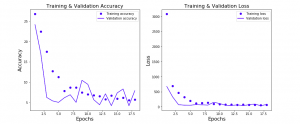
In this post, you will learn about how to train neural network for regression machine learning problems using Python Keras. Regression problems are those which are related to predicting numerical continuous value based on input parameters / features. You may want to check out some of the following posts in relation to how to use Keras to train neural network for classification problems: Keras – How to train neural network to solve multi-class classification Keras – How to use learning curve to select most optimal neural network configuration for training classification model In this post, the following topics are covered: Design Keras neural network architecture for regression Keras neural network …
Keras – Categorical Cross Entropy Loss Function
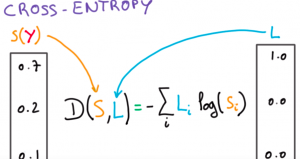
In this post, you will learn about when to use categorical cross entropy loss function when training neural network using Python Keras. Generally speaking, the loss function is used to compute the quantity that the the model should seek to minimize during training. For regression models, the commonly used loss function used is mean squared error function while for classification models predicting the probability, the loss function most commonly used is cross entropy. In this post, you will learn about different types of cross entropy loss function which is used to train the Keras neural network model. Cross entropy loss function is an optimization function which is used in case …
Python Keras – Learning Curve for Classification Model
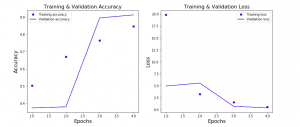
In this post, you will learn about how to train an optimal neural network using Learning Curves and Python Keras. As a data scientist, it is good to understand the concepts of learning curve vis-a-vis neural network classification model to select the most optimal configuration of neural network for training high-performance neural network. In this post, the following topics have been covered: Concepts related to training a classification model using a neural network Python Keras code for creating the most optimal neural network using a learning curve Training a Classification Neural Network Model using Keras Here are some of the key aspects of training a neural network classification model using Keras: …
Free MIT Course on Machine Learning for Healthcare

In this post, you will get a quick overview on free MIT course on machine learning for healthcare. This is going to be really helpful for machine learning / data science enthusiasts as building machine learning solutions to serve healthcare requirements comes with its own set of risks. It will be good to learn about different machine learning techniques, applications related disease progression modeling, cardiac imaging, pathology etc, risks and risk mitigation techniques. Here is the link to the course – Machine Learning for Healthcare Here are the links to some of the important course content: Video lectures Lecture notes (PDF) The entire course material can be downloaded from this page – …
Keras Multi-class Classification using IRIS Dataset
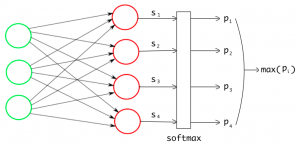
In this post, you will learn about how to train a neural network for multi-class classification using Python Keras libraries and Sklearn IRIS dataset. As a deep learning enthusiasts, it will be good to learn about how to use Keras for training a multi-class classification neural network. The following topics are covered in this post: Keras neural network concepts for training multi-class classification model Python Keras code for fitting neural network using IRIS dataset Keras Neural Network Concepts for training Multi-class Classification Model Training a neural network for multi-class classification using Keras will require the following seven steps to be taken: Loading Sklearn IRIS dataset Prepare the dataset for training and testing …
How to Setup / Install MLFlow & Get Started
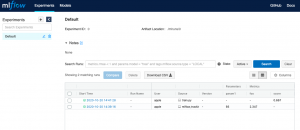
In this post, you will learn about how to setup / install MLFlow right from your Jupyter Notebook and get started tracking your machine learning projects. This would prove to be very helpful if you are running an enterprise-wide AI practice where you have a bunch of data scientists working on different ML projects. Mlflow will help you track the score of different experiments related to different ML projects. Install MLFlow using Jupyter Notebook In order to install / set up MLFlow and do a quick POC, you could get started right from within your Jupyter notebook. Here are the commands to get set up. Mlflow could be installed with …
Python – How to Add Trend Line to Line Chart / Graph

In this plot, you will learn about how to add trend line to the line chart / line graph using Python Matplotlib.As a data scientist, it proves to be helpful to learn the concepts and related Python code which can be used to draw or add the trend line to the line charts as it helps understand the trend and make decisions. In this post, we will consider an example of IPL average batting scores of Virat Kohli, Chris Gayle, MS Dhoni and Rohit Sharma of last 10 years, and, assess the trend related to their overall performance using trend lines. Let’s say that main reason why we want to …
Top Tutorials – Neural Network Back Propagation Algorithm
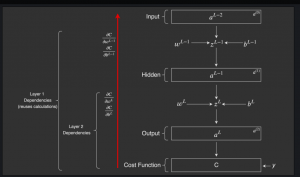
Here are the top web pages /videos for learning back propagation algorithm used to compute the gradients in neural network. I will update this page with more tutorials as I do further deep dive on back propagation algorithm. For beginners or expert level data scientists / machine learning enthusiasts, these tutorials will prove to be very helpful. Before going ahead and understanding back propagation algorithm from different pages, lets quickly understand the key components of neural network algorithm: Feed forward algorithm: Feed forward algorithm represents the aspect of how input signals travel through different neurons present in different layers in form of weighted sums and activations, and, result in output / …
Product Manager – Machine Learning Interview Questions

In this post, you will learn about some of the interview questions which can be asked in the AI / machine learning based product manager / business analyst job. Some of the questions listed in this post can also prove to be useful for the interview for the job position of director or vice president, product management. The interview questions can be categorized based on some of the following topics: Machine learning high level concepts Identifying a problem as machine learning problems Identifying business metrics vs value generation Feature engineering Working with data science team in model development lifecycle Monitoring model performance Model performance metrics presentation to key stakeholders Setting up …
Get Started with Julia – Hello World
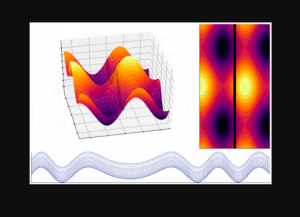
In this post, you will learn about instructions to set up Julia and getting started with Julia using Anaconda / Jupyter Notebook with information on learning resources in relation to Data Sciences / Machine Learning. Download & Setup Julia First and foremost, let’s get set up / install Julia. Go to the Julia download page and download the install package based on your operating system. I downloaded the dmg file for Mac, double clicked on the dmg file and installed the Julia. The installation was pretty easy. Double-click on Julia application or execute Julia command and it starts an interactive session (terminal) also known as REPL session. The simplest way …
Python Sklearn – How to Generate Random Datasets
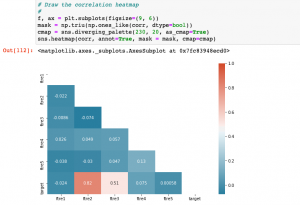
In this post, you will learn about some useful random datasets generators provided by Python Sklearn. There are many methods provided as part of Sklearn.datasets package. In this post, we will take the most common ones such as some of the following which could be used for creating data sets for doing proof-of-concepts solution for regression, classification and clustering machine learning algorithms. As data scientists, you must get familiar with these methods in order to quickly create the datasets for training models using different machine learning algorithms. Methods for generating datasets for Classification Methods for generating datasets for Regression Methods for Generating Datasets for Classification The following is the list of …
Neural Networks and Mathematical Models Examples
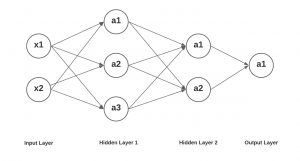
In this post, you will learn about concepts of neural networks with the help of mathematical models examples. In simple words, you will learn about how to represent the neural networks using mathematical equations. As a data scientist / machine learning researcher, it would be good to get a sense of how the neural networks can be converted into a bunch of mathematical equations for calculating different values. Having a good understanding of representing the activation function output of different computation units / nodes / neuron in different layers would help in understanding back propagation algorithm in a better and easier manner. This will be dealt in one of the …
Adaptive Linear Neuron (Adaline) Python Example

In this post, you will learn the concepts of Adaline (ADAptive LInear NEuron), a machine learning algorithm, along with Python example.As like Perceptron, it is important to understand the concepts of Adaline as it forms the foundation of learning neural networks. The concept of Perceptron and Adaline could found to be useful in understanding how gradient descent can be used to learn the weights which when combined with input signals is used to make predictions based on unit step function output. Here are the topics covered in this post in relation to Adaline algorithm and its Python implementation: What’s Adaline? Adaline Python implementation Model trained using Adaline implementation What’s Adaptive …
Yann LeCun Deep Learning Free Online Course

This post is about listing down free online course materials for deep learning (PyTorch) by none other than Yann LeCun. Here are some useful links to the deep learning course: Deep Learning course – Homepage Deep learning lecture slides Github pages having Jupyter notebooks having PyTorch code Lectures slides, notebooks and related YouTube videos can be found on the deep learning (DL) course home page. It is a 14 week course and covers different topics such as following: Introduction to deep learning (What DL can do, what are good features / representations) Gradient descent and back propagation algorithm Artificial neural networks Convolution neural networks (Convnets) and related applications Regularization / Optimization …
Python Implementations of Machine Learning Models

This post highlights some great pages where python implementations for different machine learning models can be found. If you are a data scientist who wants to get a fair idea of whats working underneath different machine learning algorithms, you may want to check out the Ml-from-scratch page. The top highlights of this repository are python implementations for the following: Supervised learning algorithms (linear regression, logistic regression, decision tree, random forest, XGBoost, Naive bayes, neural network etc) Unsupervised learning algorithms (K-means, GAN, Gaussian mixture models etc) Reinforcement learning algorithms (Deep Q Network) Dimensionality reduction techniques such as PCA Deep learning Examples that make use of above mentioned algorithms Here is an insight into …
I found it very helpful. However the differences are not too understandable for me